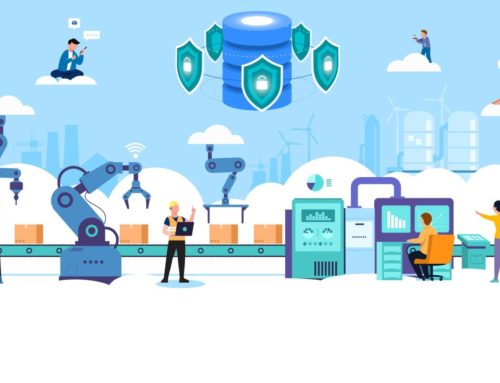Technology has come a long way throughout the years. Most of us can’t even remember what life is like without technology because of how convenient it has made our lives. Everyone is more than familiar with Information Technology (IT). But those in the IT industry may not be familiar with Operational Technology (OT). So, what is operational technology and how is it different from IT?
Difference Between IT and OT
OT has been present for more than 100 years and is a hardware or software that can be automated. They can monitor and control how physical devices perform. A few examples of OT that we’ve all come across in our daily lives are traffic lights, building systems, smart cities, and escalators.
IT manages systems such as computers and telecommunication. They initiate the performance of operations like giving input, for storing, recovering, transmitting, manipulating, and protecting data or information. IT hardware consists of computers, physical servers, and network equipment and for software, it includes operation systems, applications, and peripheral equipment. IT is important for any business because it helps provide security for the users and helps them work in a safe environment as IT manages the computer system.
For companies to stand out and have a competitive edge they must transform their business and be able to respond to market demands at all levels of operation without jeopardizing their budget or wasting efficiency. One way to ensure this doesn’t happen is to have a Manufacturing Operations Management solution.
The Five Levels of An Automation Pyramid
An Automation Pyramid lays out the manufacturing technology you should be using to help your company run efficiently while meeting all the demands of your market. The Pyramid consists of five layers each of a device and technology.
First Layer: Production Floor
Starting at the bottom, the first layer is the field also known as the Production Floor. This layer consists of measuring instruments, actuators, and communication protocols.
The measuring instruments calculate all the variables on the production floor. These instruments are flow meter, level switches, proximity, etc. The actuators are valves, pumps, and other instruments such as flow, heat, and pressure. Then the communication protocol is where information is passed to the control level where the production process takes place.
Second Layer: Production Floor
The second layer, The Control or Programmable Logic Controller’ (PCL) is the root of the business’s processes. As mentioned before the field passes on the information to the Control Level and then PLC creates the input and output to manage the production process. A PLC is an industrial computer designed to run reliable operating system software. They work in harsh environments such as extreme temperatures, vibration, humidity, and airborne particulates.
Third Layer: Production Floor
Layer three is The Supervisory Control and Data Acquisition (SCADA) systems and human-machine interfaces (HMI). This level and the 4th level are both in the middle of the pyramid and are the future of automation. The third level controls and develops the data from Water Management Systems, Electric Power, Traffic Signals, Mass Transit Systems, Environmental Control Systems, and Manufacturing Systems. From the remote locations data from these systems are sent to a central computer where it is then managed and controlled.
The data sent to the central computers help them improve output.
Layer one and two both use IT and OT. The second layer, Planning Level Including MES, and MOM. The management execution systems (MES) sees how the product is made from raw materials to its final product. At this level not only do they get to see how the product is made but also get to track the metrics on the shop floor such as labor and equipment usage. On this level, they monitor the product efficiency and manage the waste.
The top layer focuses on the enterprise’s management level in resourcing planning systems. This is the Enterprise Resource Planning where all the final decisions are made. They monitor, make reports, and control the metrics for entire corporations. The top layer uses both MOM and MES.
MOM assists in helping you improve operations with planning, scheduling, publishing, collection, tracking, and analyzing. MES on the other hand helps with delivery, cost, quality control, batch production line, and mixed-mode environments.
How Can Technology Improve Operations?
Technology covers all aspects of a workplace to ensure efficiency and productivity on how everything is run. Communication is one of the main necessities for all business types. We’ve all used it whether it is with a phone to access, emails, business applications, or other forms of text messaging apps, using your desktop or smartphone. This is one of the most important things your business needs to be able to get your work done and deliver output on time.
In this digital age, you need customer service to build a relationship with your customers. This is to help you always provide for their demands and cater to their needs.
Automation helps your business collect, analyze and take action, increasing your buyer’s purchasing decision and helps to control the stock process.
Your company should explore and make the most out of technology. As technology evolves, so should you and your company. Always have the latest technology and or update what you already have.
IT and OT should be maximized through the Automation Pyramid when meeting the demands of your customers. The Automation Pyramid can help you combine both IT and OT and ensure that your company runs smoothly. Every company needs a process to be able to monitor, analyze and work on what needs to be improved to produce better output.
Ardent Networks Inc. is a solutions and IT distributor. They work with Fortinet to provide OT solutions for businesses. You can visit their pages to find out more.







